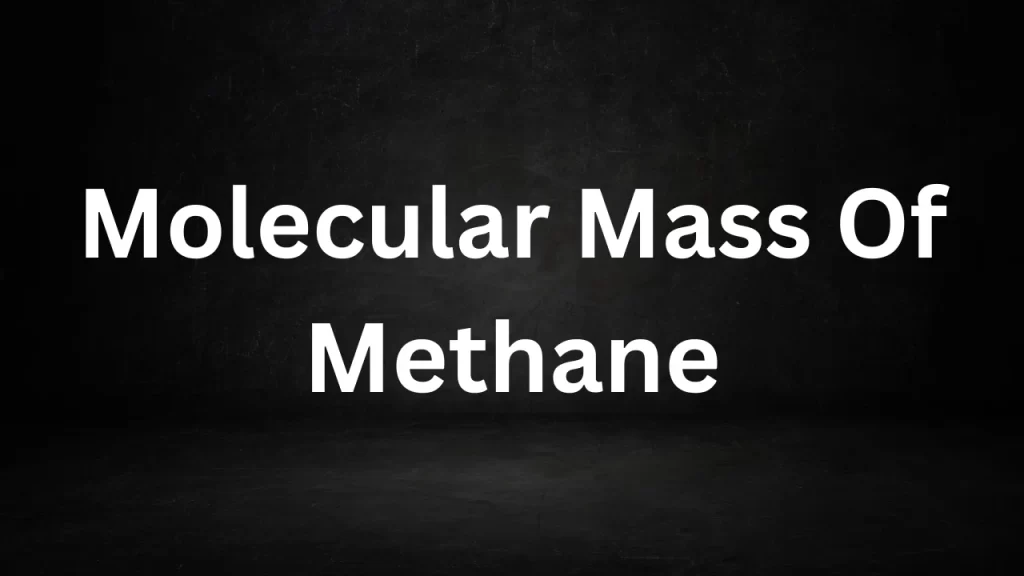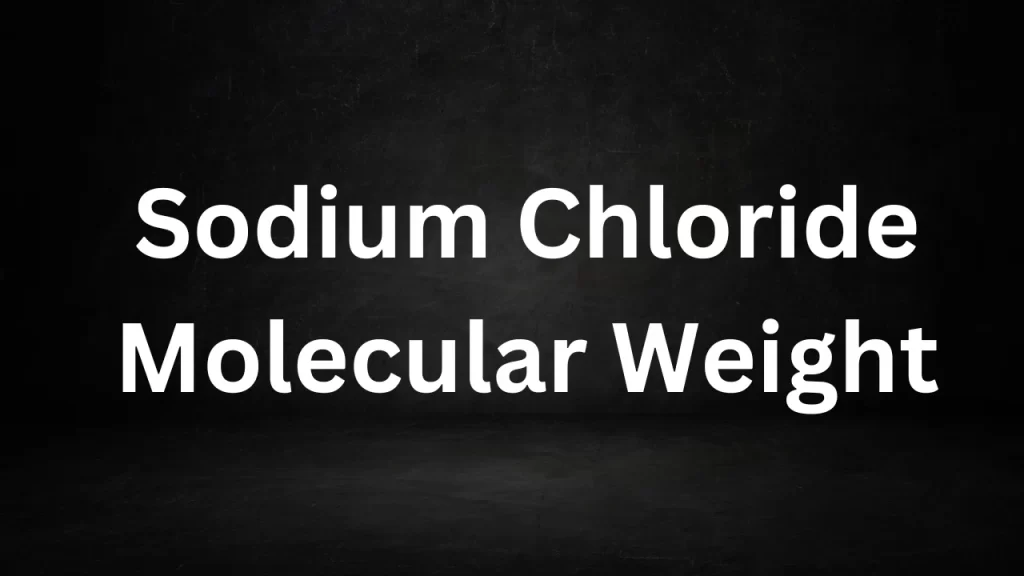Blog
Molecular Mass Of Cl2
Molecular Mass Of Cl2: Chlorine gas, represented as Cl2, is a diatomic molecule composed of two chlorine (Cl) atoms covalently bonded together.
Understanding the mole mass of Cl2 is fundamental in various scientific, industrial, and environmental applications. In this article, we will explore the mole mass of Cl2, its composition, and its relevance in different fields.

Molecular Mass Of Cl2
The Composition of Chlorine Gas
Chlorine gas (Cl2) consists of two chlorine (Cl) atoms bonded together. Chlorine gas is a gas that appears pale greenish-yellow and has a distinctive, pungent odor. It is widely employed across various industries, including water treatment, disinfection, and chemical synthesis, among others.
Calculating the Molecular Mass
To calculate the mole mass of Cl2, we need to consider the atomic masses of chlorine (Cl). The atomic mass of chlorine (Cl) is approximately 35.453 atomic mass units (amu).
The molar mass, also known as molar weight, of Cl2 is determined by summing the atomic masses of its constituent elements.
Molecular Mass of Cl2 = 2 × Atomic Mass of Cl Molecular Mass of Cl2 = 2 × 35.453 amu Molecular Mass of Cl2 ≈ 70.906 amu
Therefore, the molar mass of chlorine gas (Cl2) is approximately 70.906 atomic mass units (amu) or 70.906 grams per mole (g/mol).
Significance of Cl2’s Molecular Mass
- Water Treatment: Chlorine gas is commonly used to disinfect water in municipal water treatment facilities. Its molecular mass is essential in calculating the required dosage for effective disinfection.
- Chemical Synthesis: Chlorine gas finds application in manufacturing various chemicals, including PVC (polyvinyl chloride), pesticides, and solvents production. Its molecular mass is crucial in reaction stoichiometry.
- Environmental Monitoring: Monitoring chlorine gas emissions in industrial processes and understanding its molecular mass are essential for assessing and controlling environmental impact.
- Healthcare: Chlorine gas exposure can be harmful to human health. The assessment of health risks related to exposure and the development of safety measures take into account its molecular mass.
- Material Compatibility: Understanding the mole mass of Cl2 is important in materials science to assess the compatibility and resistance of materials used in chlorine-handling equipment.
Conclusion
Chlorine gas, with its mole mass of approximately 70.906 atomic mass units (amu), is a versatile chemical compound with a wide range of applications in water treatment, chemical synthesis, and various industries. Although it serves as a valuable tool for disinfection and chemical processes, it also presents challenges concerning safety and environmental impact.. As we continue to rely on chlorine gas for various purposes, understanding its molecular mass remains a fundamental aspect of its safe and effective use in scientific, industrial, and environmental contexts.
Read More
- Molecular Weight Of K
- Molecular Mass Of Iron
- Molecular Weight Of NH3
- Molecular Mass Of Methane
- Molecular Mass Of N2
Frequently Asked Questions (FAQs) On Molecular Mass Of Cl2
1. What is Cl2, and why is its molecular mass important?
Cl2 is chlorine gas, composed of two chlorine (Cl) atoms. Its mole mass is crucial in various scientific, industrial, and environmental applications.
2. How does the molecular mass of Cl2 relate to environmental monitoring?
Understanding the molecular mass of Cl2 is crucial for monitoring emissions in industrial processes and assessing its environmental impact.
3. What are the health implications of chlorine gas exposure, and how does its molecular mass factor in?
Exposure to chlorine gas poses health risks, and its molar mass is a vital factor to consider when assessing these hazards and implementing safety measures.
4. Why is the molecular mass of Cl2 important in materials science?
In materials science, the molar mass of Cl2 is employed to assess the compatibility and longevity of materials employed in equipment intended for chlorine handling.
5. Are there particular analytical techniques that utilize the molar mass of Cl2?
Indeed, the molar mass of Cl2 plays a role in various analytical methods, including mass spectrometry, which aids in identifying and quantifying chlorine-containing compounds within samples.
Molecular Weight Of K
Molecular Weight Of K: Potassium, a chemical element denoted by the symbol K and atomic number 19, is an essential component of the periodic table.
Understanding the molecular weight of potassium is fundamental to various scientific disciplines, from chemistry to biology. In this article, we will explore the molecular weight of potassium, its significance, and its role in different domains.

Molecular Weight Of K
The Nature of Potassium
Potassium (K) is an alkali metal found in Group 1 of the periodic table. It is highly reactive and exhibits notable properties, including its ability to conduct electricity and participate in various chemical reactions. Potassium is vital for the functioning of living organisms and is an essential nutrient in human diets.
Calculating the Molecular Mass
The molecular mass, also known as molar mass or atomic weight, of an element is equivalent to its atomic mass. The atomic mass of potassium (K) is approximately 39.0983 atomic mass units (amu).
Significance of Potassium’s Molecular Mass
- Nutrition: Potassium is a critical dietary mineral required for various physiological functions in the human body, including nerve transmission, muscle contractions, and maintaining proper fluid balance. Its molecular mass is significant in nutritional assessments.
- Agriculture: Potassium plays a crucial role in plant growth and development. The molecular mass of potassium is important in formulating potassium-based fertilizers used to enhance crop yields and quality.
- Chemical Reactions: In chemistry, the molecular mass of potassium is essential for stoichiometry and reaction calculations, particularly in determining the reactant ratios and product yields in chemical processes.
- Medicine: Potassium ions are vital for maintaining heart rhythm and other bodily functions. Knowledge of potassium’s molecular mass is essential in medical diagnostics and treatments for conditions related to potassium imbalances.
- Industrial Applications: Potassium compounds are used in various industrial processes, such as glass and soap production. The molecular mass is relevant in quality control and manufacturing procedures.
- Geology and Earth Sciences: Potassium is used in radiometric dating techniques to estimate the age of rocks and minerals. Its molecular mass contributes to the accuracy of these dating methods.
Conclusion
Potassium, with its molecular mass of approximately 39.0983 atomic mass units (amu), holds a significant place in the realms of chemistry, biology, nutrition, and agriculture. Its unique properties and crucial roles in living organisms and industrial processes make it an indispensable element in our daily lives and scientific endeavors. As we continue to explore the intricacies of nature and utilize potassium’s properties for various applications, its molecular mass remains a fundamental parameter in our understanding of the natural world and our technological advancements.
Read More
- Molecular Mass Of Iron
- Molecular Weight Of NH3
- Molecular Mass Of Methane
- Molecular Mass Of N2
- Molar Mass Of I
Frequently Asked Questions (FAQs) On Molecular Weight Of K
1. What is the molecular weight of potassium (K)?
The molecular weight of potassium (K) is approximately 39.0983 atomic mass units (amu) or 39.0983 grams per mole (g/mol).
2. Why is the molecular weight of potassium significant in nutrition?
Potassium is an essential nutrient in human diets, and its molecular weight is relevant in nutritional assessments and dietary recommendations.
3. How does potassium’s molecular weight impact plant growth and agriculture?
Potassium is crucial for plant growth, and its molecular weight influences the formulation of potassium-based fertilizers used to improve crop yields and quality.
4. In what way is potassium’s molecular mass used in chemical reactions?
In chemistry, potassium’s molecular mass is essential for stoichiometry and reaction calculations. It helps determine reactant ratios and product yields in chemical processes.
5. What role does potassium’s molecular weight play in medical diagnostics and treatments?
Potassium ions are vital for maintaining bodily functions, and knowledge of potassium’s molecular mass is important in medical assessments and treatments for conditions related to potassium imbalances.
Molecular Mass Of Iron
Molecular Mass Of Iron: Iron, a metallic element with the chemical symbol Fe and atomic number 26, holds a prominent place in the world of science and industry.
Understanding the mole mass of iron is essential in various applications, from metallurgy to medicine. In this article, we will explore the molecular mass of iron, its significance, and its role in different fields.

Molecular Mass Of Iron
The Nature of Iron
Iron (Fe) is a transition metal known for its remarkable properties, including its high conductivity, malleability, and magnetic properties. It is one of the most abundant elements on Earth and is crucial for the functioning of living organisms.
Calculating the Molecular Mass
Unlike compounds, which consist of multiple elements, the molecular mass of an element is equivalent to its atomic mass. The atomic mass of iron (Fe) is approximately 55.845 atomic mass units (amu).
Significance of Iron’s Molecular Mass
- Metallurgy: Iron’s mole mass plays a pivotal role in metallurgy, where it is used to create various alloys, such as steel. The precise molecular mass is crucial in determining the alloy’s properties, such as strength and corrosion resistance.
- Chemical Reactions: In chemistry, the mole mass of iron is essential for stoichiometry and reaction calculations. It aids in determining reactant ratios and product yields in various chemical processes.
- Medicine: Iron is vital for human health, as it is a key component of hemoglobin, which transports oxygen in our blood. Knowledge of iron’s molecular mass is essential in medical diagnostics and treatments for iron-deficiency anemia.
- Industrial Applications: Iron and its compounds are used in diverse industrial applications, including manufacturing, construction, and electronics. Understanding the molecular mass is vital for quality control and process optimization.
- Geology and Earth Sciences: Iron is a significant component of Earth’s composition. Its molecular mass contributes to the study of geological processes, including the formation of minerals and rocks.
- Space Exploration: Iron is abundant in celestial bodies like Earth, the Moon, and Mars. Its molecular mass is relevant in the study of planetary geology and potential resource utilization in space exploration.
Conclusion
Iron, with its mole mass of approximately 55.845 atomic mass units (amu), is a versatile and indispensable element in various fields, from metallurgy to medicine, industry, and beyond. Its unique properties and abundance make it a cornerstone of human civilization and scientific discovery. As we continue to explore new frontiers and innovations, the molecular mass of iron remains a fundamental parameter in our understanding of the natural world and our technological advancements.
Read More
- Molecular Weight Of NH3
- Molecular Mass Of Methane
- Molecular Mass Of N2
- Molar Mass Of I
- Molecular Weight Of Cl
Frequently Asked Questions (FAQs) On Molecular Mass Of Iron
1. What is the molecular mass of iron?
The mole mass of iron (Fe) is approximately 55.845 atomic mass units (amu).
2. Is the molecular mass of iron the same as its atomic mass?
Yes, for elements like iron, the mole mass is the same as its atomic mass. The atomic mass represents the mass of one atom of iron, and in the case of iron, it’s approximately 55.845 amu.
3. Why is the molecular mass of iron significant in metallurgy?
The mole mass of iron is crucial in metallurgy because it influences the properties of iron alloys, such as steel. Engineers and metallurgists use this value to design and manufacture materials with specific mechanical properties.
4. How is the molecular mass of iron used in chemical reactions?
In chemistry, the mole mass of iron is essential for stoichiometry. It helps determine the amount of iron required in chemical reactions and the products’ yields.
5. What is the role of iron’s molecular mass in human health?
Iron is essential for human health, particularly in the form of hemoglobin, which transports oxygen in the blood. Knowledge of iron’s mole mass is important in medical diagnostics and treatment of conditions like iron-deficiency anemia.
Molecular Weight Of NH3
Molecular Weight Of NH3: Ammonia, represented by the chemical formula NH3, is a compound of significant importance in various fields, including chemistry, agriculture, and industry.
Understanding its mole weight is fundamental for comprehending its role and applications. In this article, we will explore the mole weight of NH3, its composition, and its relevance in different domains.

Molecular Weight Of NH3
The Composition of Ammonia
Ammonia (NH3) consists of a single nitrogen (N) atom bonded with three hydrogen (H) atoms. It is a colorless gas with a distinct pungent odor and is commonly encountered in both natural and industrial settings.
Calculating the Molecular Weight
The molar mass of ammonia (NH3), also referred to as its molecular weight, is determined by adding the atomic masses of nitrogen and hydrogen. The atomic mass of nitrogen (N) is approximately 14.00674 atomic mass units (amu), while the atomic mass of hydrogen (H) is approximately 1.00784 amu.
The mole weight of NH3 can be calculated as follows:
Molecular Weight of NH3 = Atomic Mass of N + 3 × Atomic Mass of H Molecular Weight of NH3 ≈ 14.00674 amu + 3 × 1.00784 amu Molecular Weight of NH3 ≈ 17.03020 amu
So, the mole weight of ammonia (NH3) is approximately 17.03020 atomic mass units (amu) or 17.03020 grams per mole (g/mol).
Significance of Ammonia’s Molecular Weight
- Agriculture: Ammonia is a crucial component of fertilizers. Its mole weight is significant in determining the concentration and dosage of ammonia-based fertilizers used to enhance crop growth.
- Industrial Applications: In industrial applications such as refrigeration, ammonia is utilized as a refrigerant gas. Its molecular weight plays a role in designing efficient cooling systems.
- Chemical Reactions: Understanding the molecular weight of ammonia is essential in chemical reactions, including the synthesis of various nitrogen-containing compounds.
- Environmental Impact: Ammonia is a common air pollutant. Knowledge of its mole weight aids in monitoring and regulating ammonia emissions and their impact on ecosystems.
- Household Products: Ammonia is a common ingredient in various household cleaning products. Its mole weight influences its chemical properties and effectiveness as a cleaner.
Conclusion
Ammonia, with its mole weight of approximately 17.03020 atomic mass units (amu), is a versatile compound with wide-ranging applications. Its significance spans agriculture, industry, chemistry, and environmental science. Whether as a fertilizer, refrigerant, or cleaning agent, ammonia’s molecular weight underpins its role in diverse areas, making it an integral part of our everyday lives and the scientific world.
Read More
- Molecular Mass Of Methane
- Molecular Mass Of N2
- Molar Mass Of I
- Molecular Weight Of Cl
- Molecular Mass Of Sodium Carbonate
Frequently Asked Questions (FAQs) On Molecular Weight Of NH3
1. What is NH3, and why is its molecular weight important?
NH3, commonly referred to as ammonia, is a chemical compound comprising nitrogen and hydrogen elements. Its mole weight is crucial for various applications and chemical calculations.
2. How is the molecular weight of NH3 calculated?
To find the molar mass of NH3, you simply add the atomic masses of its constituent elements, nitrogen (N) and hydrogen (H).
3. What is the molecular weight of NH3 (ammonia)?
The mole weight of ammonia (NH3) is approximately 17.03020 atomic mass units (amu) or 17.03020 grams per mole (g/mol).
4. What role does ammonia’s molecular weight play in agriculture?
Ammonia is a key component in fertilizers. Its molecular weight is important for determining fertilizer concentration and application rates in agriculture.
5. How is ammonia’s molecular weight relevant in industrial applications?
In the field of refrigeration, ammonia serves as a common refrigerant gas. Its molecular weight influences its suitability and efficiency in cooling systems.
Molecular Mass Of Methane
Molecular Mass Of Methane: Methane, the simplest hydrocarbon, is a vital component in the world of chemistry and energy.
Understanding its mole mass is key to comprehending its significance in various scientific, industrial, and environmental contexts. In this article, we will delve into the molecular mass of methane, its composition, and its relevance in diverse fields.

Molecular Mass Of Methane
The Composition of Methane
Methane, represented as CH4, is a hydrocarbon consisting of one carbon (C) atom bonded to four hydrogen (H) atoms. It is the primary component of natural gas and is widely distributed in Earth’s atmosphere, making it a crucial player in the carbon and energy cycles.
Calculating the Molecular Mass
To calculate the mole mass of methane (CH4), we need to consider the atomic masses of carbon and hydrogen. The atomic mass of carbon (C) is approximately 12.011 atomic mass units (amu), while the atomic mass of hydrogen (H) is approximately 1.00784 amu.
The mole mass (also known as molar mass or molar weight) of methane is determined by summing the atomic masses of its constituent elements:
Molecular Mass of CH4 = Atomic Mass of C + 4 × Atomic Mass of H Molecular Mass of CH4 ≈ 12.011 amu + 4 × 1.00784 amu Molecular Mass of CH4 ≈ 16.043 amu
So, the molecular mass of methane (CH4) is approximately 16.043 atomic mass units (amu) or 16.043 grams per mole (g/mol).
Significance of Methane’s Molecular Mass
- Energy Source: Methane is a valuable energy source and is often used as natural gas for heating, electricity generation, and fueling vehicles. Its mole mass is essential for calculating energy content and combustion efficiency.
- Climate Change: Methane is a potent greenhouse gas. Its mole mass plays a role in climate change discussions, as it affects its residence time in the atmosphere and its impact on global warming.
- Chemical Reactions: Understanding the mole mass of methane is crucial in chemical reactions, such as combustion and methane reforming, which are significant in energy production and chemical processes.
- Environmental Monitoring: Researchers use methane’s molecular mass in environmental studies, including the measurement of methane emissions from natural sources and human activities.
- Industrial Processes: Methane’s mole mass is vital in various industrial applications, such as chemical synthesis, metallurgy, and the production of hydrogen and other chemicals.
Conclusion
Methane, with its mole mass of approximately 16.043 atomic mass units (amu), is a fundamental hydrocarbon with diverse applications and implications. It serves as a vital energy source, a contributor to climate change, and a key participant in chemical reactions and industrial processes. As we continue to explore sustainable energy sources and address environmental concerns, the mole mass of methane remains a critical factor in our scientific and technological endeavors.
Read More
- Molecular Mass Of N2
- Molar Mass Of I
- Molecular Weight Of Cl
- Molecular Mass Of Sodium Carbonate
- Molecular Mass Of Nitric Acid
Frequently Asked Questions (FAQs) On Molecular Mass Of Methane
1. What is methane, and why is its molecular mass important?
Methane (CH4) is the simplest hydrocarbon and a major component of natural gas. Its mole mass is crucial for various scientific, industrial, and environmental applications.
2. How is the molecular mass of methane calculated?
To find methane’s molecular mass, add the atomic weights of its elements: one carbon (C) and four hydrogen (H) atoms.
3. What is the molecular mass of methane (CH4)?
The molecular mass of methane is approximately 16.043 atomic mass units (amu) or 16.043 grams per mole (g/mol).
4. Why is methane considered a significant energy source?
Methane, burned as natural gas for heating, power, and vehicles, relies on its mole mass for energy calculations.
5. How does methane contribute to climate change, and what role does its molecular mass play?
Methane is a potent greenhouse gas that traps heat in the atmosphere. Its molecular mass affects its residence time in the atmosphere and its impact on global warming.
Sodium Chloride Molecular Weight
Sodium Chloride Molecular Weight: Sodium chloride, commonly known as table salt, is a ubiquitous and essential compound in our daily lives. While it enhances the flavor of our food, it also plays a crucial role in various industries and scientific endeavors.
One fundamental aspect of sodium chloride is its molecular weight, which is a key factor in understanding its properties and applications. In this article, we will explore the molecular weight of sodium chloride and its significance in different fields.

Sodium Chloride Molecular Weight
The Composition of Sodium Chloride
Sodium chloride (NaCl) is a chemical compound composed of two elements: sodium (Na) and chlorine (Cl). It is an ionic compound held together by electrostatic forces due to the transfer of an electron from sodium to chlorine, resulting in the formation of positively charged sodium ions (Na+) and negatively charged chloride ions (Cl-).
Calculating the Molecular Weight
To determine the mole weight of sodium chloride (NaCl), we need to consider the atomic masses of sodium and chlorine. Sodium (Na) has an atomic mass of approximately 22.98977 atomic mass units (amu), while chlorine (Cl) has about 35.453 amu.
The molar mass, also called the mole weight or molar weight, of sodium chloride is determined by summing the atomic masses of its component elements.
Molecular Weight of NaCl = Atomic Mass of Na + Atomic Mass of Cl Molecular Weight of NaCl ≈ 22.98977 amu + 35.453 amu Molecular Weight of NaCl ≈ 58.44277 amu
Hence, sodium chloride (NaCl) has a molar mass of about 58.44277 atomic mass units (amu) or 58.44277 grams per mole (g/mol).
Significance of Sodium Chloride’s Molecular Weight
- Chemical Reactions: The mole weight of sodium chloride is crucial in various chemical reactions, especially in stoichiometry, where it helps determine the reactant ratios and the amount of product produced.
- Industrial Applications: In industries such as food processing, pharmaceuticals, and water treatment, knowing the mole weight of sodium chloride is vital for precise measurements and formulations.
- Health and Nutrition: Sodium chloride is a vital dietary component, and knowledge of its molecular weight aids dietary calculations, particularly for those with restrictions.
- Analytical Chemistry: In analytical chemistry, sodium chloride’s molecular weight is utilized, particularly in titration, as a primary standard for solution standardization.
- Salt in Solutions: The molar mass of sodium chloride is crucial for comprehending colligative properties in solutions, relevant in science and industry.
Conclusion
Sodium chloride, with its precise mole weight of approximately 58.44277 amu, significantly impacts chemistry, industry, and daily living. Its mole weight is a key factor in chemical reactions, industrial processes, dietary considerations, and analytical techniques. From seasoning meals to advancing science, sodium chloride’s molecular weight plays a vital role in various aspects of our world.
Read More
- Equivalent Weight Of CaCO3
- Benzoic Acid Molar Mass
- Sulfuric Acid Molar Mass
- Discrete Mathematics For Computer Science
- Molecular Mass of Carbon Dioxide
Frequently Asked Questions (FAQs) On Sodium Chloride Molecular Weight
1. What is sodium chloride?
Sodium chloride (NaCl) is a chemical compound commonly known as table salt. It is composed of sodium (Na) and chlorine (Cl) ions.
2. What is the molecular weight of sodium chloride?
The mole weight of sodium chloride (NaCl) is approximately 58.44277 atomic mass units (amu) or 58.44277 grams per mole (g/mol).
3. How is the molecular weight of sodium chloride calculated?
To calculate the mole weight of sodium chloride, you add the atomic masses of its constituent elements, sodium (Na) and chlorine (Cl).
4. Why is knowing the molecular weight of sodium chloride important in chemistry?
Sodium chloride’s molecular weight is essential for stoichiometry, determining reactant ratios, and understanding chemical reactions. It is also crucial in various industries and scientific fields.
5. In which industries is the knowledge of sodium chloride’s molecular weight significant?
Sodium chloride’s molecular weight is crucial in industries like food processing, pharmaceuticals, water treatment, and chemical manufacturing, requiring precision.
Molecular Mass Of N2
Molecular Mass Of N2: Molecular mass, also known as molecular weight, plays a crucial role in understanding the physical and chemical properties of substances.
It is a fundamental concept in chemistry, allowing us to quantify the mass of molecules and compounds. In this article, we will explore the mole mass of N2, or dinitrogen, and delve into why it’s a crucial component in the world of chemistry.

Molecular Mass Of N2
The Basics of Molecular Mass
Before we dive into N2’s molecular mass, let’s briefly review what molecular mass is and how it is calculated. Molecular mass represents the sum of the atomic masses of all the atoms in a molecule. This sum is typically expressed in atomic mass units (amu) or unified atomic mass units (u). To calculate the mole mass of a compound, you add up the atomic masses of all the atoms in the molecule based on the periodic table.
Understanding N2 (Dinitrogen)
N2, or dinitrogen, is the most abundant gas in Earth’s atmosphere, making up approximately 78% of the air we breathe. It consists of two nitrogen atoms (N) bonded together by a strong covalent bond. To determine the mole mass of N2, we need to consider the atomic masses of nitrogen atoms.
The atomic mass of nitrogen (N) is approximately 14.00674 amu. Since N2 contains two nitrogen atoms, we can calculate its mole mass as follows:
Molecular Mass of N2 = 2 × Atomic Mass of Nitrogen (N)
The Molecular Mass of N2 = 2 × 14.00674 amu
Molecular Mass of N2 ≈ 28.01348 amu
So, the mole mass of dinitrogen (N2) is approximately 28.01348 amu.
Significance of N2’s Molecular Mass
- Atmospheric Composition: Understanding the mole mass of N2 is crucial for comprehending the composition of Earth’s atmosphere. Nitrogen gas (N2) makes up the majority of the air, and its molecular mass helps scientists and meteorologists analyze the properties of the atmosphere, including its density and pressure.
- Chemical Reactions: Molecular mass is fundamental in chemical reactions. When chemists balance chemical equations, they take into account the molecular masses of reactants and products to ensure the conservation of mass. N2 participates in a wide range of chemical reactions, including those found in the Haber-Bosch process for ammonia production, as well as combustion reactions in engines and industrial processes.
- Avogadro’s Hypothesis: The mole mass of N2 plays a role in Avogadro’s hypothesis, which states that equal volumes of gases at the same temperature and pressure contain an equal number of molecules. N2 is frequently employed as a standard gas in gas stoichiometry owing to its abundance and precisely known molecular mass.
- Analytical Chemistry: In the field of analytical chemistry, the molecular mass of N2 finds application in methods such as mass spectrometry. It helps researchers identify and quantify unknown substances by comparing the molecular mass of their fragments to known values.
Conclusion
Understanding the mole mass of N2 (dinitrogen) is essential in various fields of science and industry. With a molecular mass of approximately 28.01348 amu, N2 plays a significant role in the composition of Earth’s atmosphere, chemical reactions, and analytical chemistry. This fundamental knowledge helps us better grasp the behavior of gases, the principles of stoichiometry, and the composition of the air we breathe. The mole mass of N2 serves as a cornerstone in the world of chemistry and is a vital concept for anyone studying the natural sciences.
Read More
- Molar Mass Of I
- Molecular Weight Of Cl
- Molecular Mass Of Sodium Carbonate
- Molecular Mass Of Nitric Acid
- Molecular Mass Of Sulphuric Acid
Frequently Asked Questions (FAQs) On Molecular Mass Of N2
1. What is N2, and why is it important to know its molecular mass?
N2, also known as dinitrogen, is a diatomic molecule composed of two nitrogen atoms bonded together. Its mole mass is essential to understand various aspects of chemistry, including chemical reactions, atmospheric composition, and analytical techniques.
2. What is the molecular mass of N2?
The mole mass of N2 is approximately 28.01348 atomic mass units (amu).
3. How is the molecular mass of N2 calculated?
To calculate the mole mass of N2, you add up the atomic masses of the two nitrogen (N) atoms in the molecule. Since the atomic mass of nitrogen is approximately 14.00674 amu, the mole mass of N2 is 2 times this value.
4. Why is N2’s molecular mass important in the field of chemistry?
N2’s molecular mass is crucial because it is involved in various chemical reactions, serves as a reference gas in gas stoichiometry, and plays a role in Avogadro’s hypothesis, which is fundamental in understanding the behavior of gases.
5. How does N2 contribute to Earth’s atmosphere?
N2 is the most abundant gas in Earth’s atmosphere, making up approximately 78% of the air we breathe. Its molecular mass influences the density and pressure of the atmosphere, affecting weather patterns and other atmospheric processes.
Equivalent Weight Of CaCO3
Equivalent Weight Of CaCO3: Calcium carbonate (CaCO₃) is a ubiquitous compound with a wide range of applications, from its role as a dietary supplement to its use in industrial processes and environmental science.
In chemistry, understanding the equivalent weight of calcium carbonate is essential for stoichiometry, acid-base titrations, and various chemical calculations. In this article, we will explore the concept of equivalent weight, discuss its significance in chemistry, and calculate the equivalent weight of calcium carbonate.

Equivalent Weight Of CaCO3
Section 1: Equivalent Weight – A Fundamental Concept
1.1 What Is Equivalent Weight?
Equivalent weight, also known as equivalent mass, is a fundamental concept in chemistry that simplifies stoichiometric calculations. It represents the mass of a substance that can transfer one equivalent of the species of interest, such as protons (H⁺), hydroxide ions (OH⁻), electrons (e⁻), or any other specific chemical entity involved in a reaction.
In the context of acid-base reactions, the equivalent weight is frequently linked to the exchange of one mole of protons (H⁺ ions) or hydroxide ions (OH⁻ ions). For redox reactions, it corresponds to the transfer of one mole of electrons (e⁻).
1.2 Significance of Equivalent Weight
Equivalent weight is significant in chemistry for several reasons:
1.2.1 Stoichiometry
Equivalent weight simplifies stoichiometric calculations, allowing chemists to balance chemical equations and determine the quantities of reactants and products involved in a reaction accurately.
1.2.2 Acid-Base Titrations
In acid-base titrations, equivalent weight is crucial for calculating the concentration of an analyte (substance being analyzed) or titrant (substance of known concentration) based on the volume of titrant required for neutralization.
1.2.3 Redox Reactions
In redox reactions, equivalent weight serves the purpose of computing the quantity of moles of electrons transferred, which greatly assists in establishing the stoichiometry of the reaction and balancing redox equations.
1.2.4 Precipitation Reactions
In precipitation reactions, equivalent weight helps determine the mass of a substance required to completely precipitate another substance from a solution.
Section 2: Calcium Carbonate (CaCO₃) – An Overview
2.1 Composition and Properties
Calcium carbonate (CaCO₃) is a chemical compound composed of calcium ions (Ca²⁺) and carbonate ions (CO₃²⁻). It is a white, odorless powder that occurs naturally in various forms, including chalk, limestone, and marble. Calcium carbonate is insoluble in water but can react with acids to form soluble calcium salts, carbon dioxide (CO₂), and water.
2.2 Applications
Calcium carbonate has numerous practical applications, including:
- Dietary Supplement: Calcium carbonate is used as a dietary supplement to provide calcium, an essential mineral for bone health.
- Pharmaceuticals: It is a common ingredient in antacids, as it can neutralize excess stomach acid.
- Construction: Calcium carbonate is used as a building material in the construction industry, especially in the production of cement and concrete.
- Paper Industry: It is employed as a filler in the paper industry to improve paper opacity and brightness.
- Environmental Science: Calcium carbonate is found in natural limestone formations, playing a role in geological processes and carbon cycling in the environment.
Section 3: Calculating the Equivalent Weight of Calcium Carbonate (CaCO₃)
3.1 Molecular Weight of Calcium Carbonate
Before calculating the equivalent weight of calcium carbonate, we need to determine its molecular weight. To do this, we sum the atomic masses of all the constituent elements in the chemical formula (CaCO₃):
- Atomic mass of calcium (Ca) ≈ 40.08 atomic mass units (amu).
- Atomic mass of carbon (C) ≈ 12.01 amu.
- Atomic mass of oxygen (O) ≈ 16.00 amu.
Now, let’s calculate the molecular weight of calcium carbonate (CaCO₃):
Molecular Weight of CaCO₃ = (Atomic Mass of Ca) + (Atomic Mass of C) + (3 × Atomic Mass of O) Molecular Weight of CaCO₃ = (40.08 amu) + (12.01 amu) + (3 × 16.00 amu)
Molecular Weight of CaCO₃ ≈ 100.09 amu
3.2 Equivalent Weight Calculation
The equivalent weight of calcium carbonate is related to the number of moles of carbonate ions (CO₃²⁻) it can provide or react with in a chemical reaction. Since calcium carbonate contains one carbonate ion (CO₃²⁻) per formula unit, its equivalent weight is equal to its molecular weight.
Equivalent Weight of CaCO₃ = Molecular Weight of CaCO₃ Equivalent Weight of CaCO₃ ≈ 100.09 amu
Therefore, the equivalent weight of calcium carbonate (CaCO₃) is approximately 100.09 amu.
Section 4: Significance and Applications of the Equivalent Weight of Calcium Carbonate
4.1 Acid-Base Titrations
In acid-base titrations, chemists use the equivalent weight of calcium carbonate to determine the concentration of calcium carbonate in a sample or to facilitate neutralization reactions.. By knowing the equivalent weight, chemists can calculate the amount of acid required to react with one equivalent of carbonate ions (CO₃²⁻) in the sample.
4.2 Precipitation Reactions
In precipitation reactions, the equivalent weight of calcium carbonate is of paramount importance, as it can be utilized to calculate the amount of calcium carbonate required for the precipitation of specific ions from a solution.This information is valuable in analytical chemistry and environmental science.
4.3 Industrial and Environmental Applications
In industries like construction and paper production, the equivalent weight of calcium carbonate is a critical factor in determining the optimal quantity to use as a filler or construction material. Additionally, in environmental science, it plays a role in understanding the behavior of calcium carbonate in geological and environmental processes.
Conclusion
The equivalent weight of calcium carbonate (CaCO₃) is a fundamental concept in chemistry with practical applications in various fields, including analytical chemistry, environmental science, and industry. Understanding this value enables chemists and scientists to perform accurate stoichiometric calculations, conduct acid-base titrations, and make informed decisions in a wide range of applications. Whether in the laboratory, pharmaceuticals, or construction, the knowledge of the equivalent weight of calcium carbonate enhances our ability to manipulate and utilize this versatile compound effectively.
Read More
- Benzoic Acid Molar Mass
- Sulfuric Acid Molar Mass
- Discrete Mathematics For Computer Science
- Molecular Mass of Carbon Dioxide
- Difference Between Conduction Convection And Radiation
Frequently Asked Questions (FAQs) On Equivalent Weight Of CaCO3
1. What is the equivalent weight of calcium carbonate (CaCO₃)?
The equivalent weight of calcium carbonate is approximately equal to its molecular weight, which is approximately 100.09 atomic mass units (amu).
2. What is equivalent weight, and why is it important in chemistry?
Equivalent weight is the mass of a substance that can transfer one equivalent of a particular chemical species (e.g., protons, hydroxide ions, electrons) in a chemical reaction. It is essential in chemistry for stoichiometric calculations, acid-base titrations, and determining reaction quantities accurately.
3. How is the equivalent weight of calcium carbonate calculated?
The equivalent weight of calcium carbonate is equal to its molecular weight. To calculate it, you sum the atomic masses of all the constituent elements in the chemical formula (CaCO₃). In this case, it’s approximately 100.09 amu.
4. What is the molecular weight of calcium carbonate (CaCO₃)?
The molecular weight of calcium carbonate is approximately 100.09 atomic mass units (amu). Calculation involves summing the atomic masses of calcium, carbon, and the three oxygen atoms present in the formula.
5. In what applications is the equivalent weight of calcium carbonate important?
The equivalent weight of calcium carbonate is significant in acid-base titrations to determine concentrations. It’s also relevant in precipitation reactions, where it helps calculate the mass of calcium carbonate needed to precipitate specific ions. Additionally, it plays a role in industries like construction and paper production, as well as in environmental science.
Molar Mass Of I
Molar Mass Of I: The mol mass of iodine (I) is a fundamental concept in chemistry and science. Iodine, a chemical element with atomic number 53, belongs to the halogen group in the periodic table.
It is known for its distinctive purple-black color and plays essential roles in various applications, including healthcare, industry, and research. Understanding the molar mass of iodine is pivotal, as it serves as a cornerstone for diverse calculations, chemical reactions, and scientific investigations. In this comprehensive article, we will delve deep into the concept of molar mass, explore the significance of iodine in various fields, and calculate the molar mass of iodine.

Molar Mass Of I
Section 1: Molar Mass – A Foundational Concept
1.1 What Is Molar Mass?
Molar mass, often referred to as molecular weight or molecular mass, is a fundamental concept in chemistry. It represents the mass of one mole of a substance and is typically expressed in atomic mass units (amu) or unified atomic mass units (u). The mole, a unit of measurement used in chemistry, allows scientists to work with large quantities of atoms and molecules, making it a vital concept for calculations and stoichiometry.
Molar mass calculations involve summing the atomic masses of all the constituent atoms in a compound, considering their naturally occurring isotopic proportions. This sum provides the molar mass of the substance, and it plays a crucial role in various aspects of chemistry.
1.2 Significance of Molar Mass
The significance of mol mass in chemistry is multifaceted:
1.2.1 Stoichiometry
Stoichiometry is a branch of chemistry that deals with the quantitative relationships between reactants and products in chemical reactions. Molar mass is essential for stoichiometry as it enables chemists to:
- Balance chemical equations accurately by ensuring that the same number of atoms of each element are on both sides of the equation.
- Determine the quantities of reactants and products involved in chemical reactions.
- Calculate reaction yields, allowing for efficient use of resources in industrial processes.
1.2.2 Chemical Reactions
Molar mass information is indispensable for predicting the behavior of substances in chemical reactions. It aids in:
- Understanding how reactants interact and transform into products.
- Assessing the efficiency and feasibility of chemical reactions.
- Determining the composition of products formed during a reaction.
1.2.3 Analytical Chemistry
Analytical chemistry relies on molar mass measurements for the identification and quantification of substances in various samples. This is crucial in fields such as environmental monitoring, food safety testing, and pharmaceutical quality control.
1.2.4 Laboratory Work
In laboratory experiments, scientists and chemists use molar mass calculations to prepare solutions with specific concentrations accurately. This ensures the reliability of experimental results and the reproducibility of experiments.
Section 2: The Element Iodine (I)
2.1 Iodine: An Elemental Overview
Iodine is a non-metallic chemical element with the symbol “I” and atomic number 53. It belongs to the halogen group in the periodic table, which includes fluorine, chlorine, bromine, and astatine. Iodine is known for several distinguishing characteristics:
- Physical State: At room temperature and pressure, iodine exists as a purple-black solid. However, it can sublimate into a violet vapor when heated without passing through a liquid phase.
- Occurrence: Iodine is relatively rare in Earth’s crust but is present in trace amounts in certain minerals and seawater.
- Biological Importance: Iodine is crucial for human health as it is a key component of thyroid hormones, which regulate metabolism. A deficiency in iodine can lead to thyroid disorders and various health issues.
2.2 Iodine Isotopes
Iodine has several isotopes, each with a different number of neutrons in its nucleus. The two most stable and abundant isotopes of iodine are iodine-127 (127I) and iodine-129 (129I). Iodine-127 is the most common and is non-radioactive, making up about 99.8% of naturally occurring iodine. Iodine-129, on the other hand, is radioactive and occurs in trace amounts.
The presence of multiple isotopes affects the molar mass calculation of iodine, as the weighted average of the isotopic masses must be considered.
2.3 Iodine in the Environment
Iodine is naturally found in soil, seawater, and certain foods. It is an essential nutrient for living organisms, particularly humans. The primary dietary sources of iodine include seafood, iodized salt, and some dairy products.
Iodine deficiency can lead to health problems, including goiter (enlargement of the thyroid gland), cretinism (a developmental disorder), and thyroid dysfunction. To combat iodine deficiency disorders, many countries have introduced iodized salt into their food supply.
Section 3: Calculating the Molar Mass of Iodine
3.1 Atomic Mass of Iodine
To calculate the mol mass of iodine (I), we must consider the atomic mass of the element. The atomic mass of iodine is an average value that accounts for the presence of multiple isotopes, each with a different mass and abundance.
The atomic mass of iodine-127 (the most abundant isotope) is approximately 126.90447 atomic mass units (amu) or unified atomic mass units (u).
3.2 Molar Mass Calculation
The mol mass of iodine is determined by considering the weighted average of the atomic masses of its isotopes, accounting for their respective abundances.
To calculate the mol mass of iodine (I), we use the following formula:
Mol Mass of Iodine (I) = (Mass of 127I × Abundance of 127I) + (Mass of 129I × Abundance of 129I)
In this formula:
- Mass of 127I is approximately 126.90447 amu.
- Abundance of 127I is approximately 99.8% (or 0.998).
- Mass of 129I is approximately 128.90477 amu.
- Abundance of 129I is a small fraction of the remaining percentage (approximately 0.2% or 0.002).
Using these values, we can calculate the mol mass of iodine as follows:
Mol Mass of Iodine (I) = (126.90447 amu × 0.998) + (128.90477 amu × 0.002)
The Mol Mass of Iodine (I) = 126.77303 amu + 0.25781 amu
Mol Mass of Iodine (I) ≈ 126.77303 amu
Therefore, the mol mass of iodine (I) is approximately 126.77303 amu.
Read More
- Molecular Weight Of Cl
- Molecular Mass Of Sodium Carbonate
- Molecular Mass Of Nitric Acid
- Molecular Mass Of Sulphuric Acid
- Molar Mass Of Sulphuric Acid
Frequently Asked Questions (FAQs) On Molar Mass Of I
1. What is the molar mass of iodine (I)?
The mol mass of iodine (I) is approximately 126.77303 atomic mass units (amu) or unified atomic mass units (u).
2. What is molar mass, and why is it important in chemistry?
Mol mass, also known as molecular weight, represents the mass of one mole of a substance and is expressed in atomic mass units (amu) or unified atomic mass units (u). It is essential in chemistry for stoichiometry, balancing chemical equations, and various calculations.
3. How is the molar mass of iodine calculated?
The mol mass of iodine is calculated by considering the weighted average of the atomic masses of its isotopes, accounting for their respective abundances. The primary isotopes of iodine are iodine-127 and iodine-129.
4. What are the isotopes of iodine, and how do they affect its molar mass?
Iodine has several isotopes, with iodine-127 and iodine-129 being the most stable and abundant. The presence of multiple isotopes affects the mol mass calculation, as it considers the masses and abundances of each isotope.
5. What is the significance of the molar mass of iodine in chemistry?
The mol mass of iodine is significant for stoichiometry, allowing chemists to balance chemical equations and determine reactant and product quantities accurately. It also plays a role in chemical reactions, analytical chemistry, and various scientific and practical applications.
Molecular Weight Of Cl
Molecular Weight Of Cl: Chlorine (Cl) is a chemical element with atomic number 17, making it one of the halogens in the periodic table.
It is a highly reactive and essential element used in various industries, including water treatment, chemical manufacturing, and the production of plastics. Understanding the molecular weight of chlorine is fundamental in chemistry, as it aids in various calculations and chemical reactions. In this article, we will explore the concept of molecular weight, discuss its significance in chemistry, and calculate the molecular weight of chlorine.

Molecular Weight Of Cl
Molecular Weight: An Important Concept
Mole weight, also known as molen mass or molar mass, is a crucial concept in chemistry. It represents the mass of one mole of a substance and is typically expressed in atomic mass units (amu) or unified atomic mass units (u). Calculating the molecular weight of a chemical element or compound involves summing the atomic masses of all the constituent atoms according to their proportions in the chemical formula.
Calculating the Molecular Weight of Chlorine
To calculate the mole weight of chlorine (Cl), we can use its atomic mass. The atomic mass of chlorine is approximately 35.45 atomic mass units (amu) or unified atomic mass units (u). Since chlorine exists as single atoms (Cl) and not as diatomic molecules (Cl2), its molecular weight is the same as its atomic mass.
Mole Weight of Chlorine (Cl) = Atomic Mass of Chlorine (Cl) Mole Weight of Chlorine (Cl) = 35.45 amu or 35.45 u
So, the mole weight of chlorine (Cl) is approximately 35.45 amu or 35.45 u.
Significance of Chlorine Molecular Weight
The mole weight of chlorine holds significance in various aspects of chemistry:
- Stoichiometry: Mole weight is essential in stoichiometry, allowing chemists to balance chemical equations and determine the quantities of reactants and products involved in chemical reactions that include chlorine.
- Chemical Reactions: Understanding the mole weight of chlorine aids in predicting its behavior in chemical reactions, calculating reaction yields, and determining product formation.
- Water Treatment: Chlorine is commonly used for water disinfection in municipal water treatment plants. Its molecular weight is important for accurately dosing chlorine to ensure safe drinking water.
- Chemical Manufacturing: Chlorine is a key raw material in various chemical processes, including the production of PVC (polyvinyl chloride) and chlorine-based solvents. Knowledge of its mole weight is crucial for quality control and process optimization.
- Analytical Chemistry: In analytical chemistry, mole weight measurements are often used for the identification and quantification of substances.
Conclusion
The mole weight of chlorine (Cl) is a fundamental concept in chemistry, with practical implications in various applications. By calculating its mole weight, chemists can make informed decisions, conduct precise experiments, and ensure the efficient utilization of chlorine in chemical processes, water treatment, and industrial applications. This understanding highlights the importance of mole weight in chemistry, allowing us to comprehend and control element properties effectively.
Read More
- Molecular Mass Of Sodium Carbonate
- Molecular Mass Of Nitric Acid
- Molecular Mass Of Sulphuric Acid
- Molar Mass Of Sulphuric Acid
- Types Of Motion In Physics
Frequently Asked Quetions (FAQs) OnMolecular Weight Of Cl
1. What is the molecular weight of chlorine (Cl)?
The mole weight of chlorine (Cl) is approximately 35.45 atomic mass units (amu) or unified atomic mass units (u).
2. What is molecular weight, and why is it important in chemistry?
Mole weight, also known as mole mass or molar mass, represents the mass of one mole of a substance and is expressed in atomic mass units (amu) or unified atomic mass units (u). It is crucial in chemistry for stoichiometry, balancing chemical equations, and various calculations.
3. How is the molecular weight of chlorine calculated?
The mole weight of chlorine is the same as its atomic mass, which is approximately 35.45 amu or 35.45 u. Chlorine exists as single atoms (Cl) and does not form diatomic molecules (Cl2).
4. Why is the molecular weight of chlorine significant in chemistry?
The mole weight of chlorine is important for stoichiometry, allowing chemists to balance chemical equations and determine reactant and product quantities accurately. It is also relevant in chemical reactions, water treatment, chemical manufacturing, and analytical chemistry.
5. Is chlorine always in its atomic form (Cl) in chemical reactions?
In most chemical reactions, chlorine exists as individual atoms (Cl) rather than diatomic molecules (Cl2). Therefore, its mole weight is equivalent to its atomic mass.